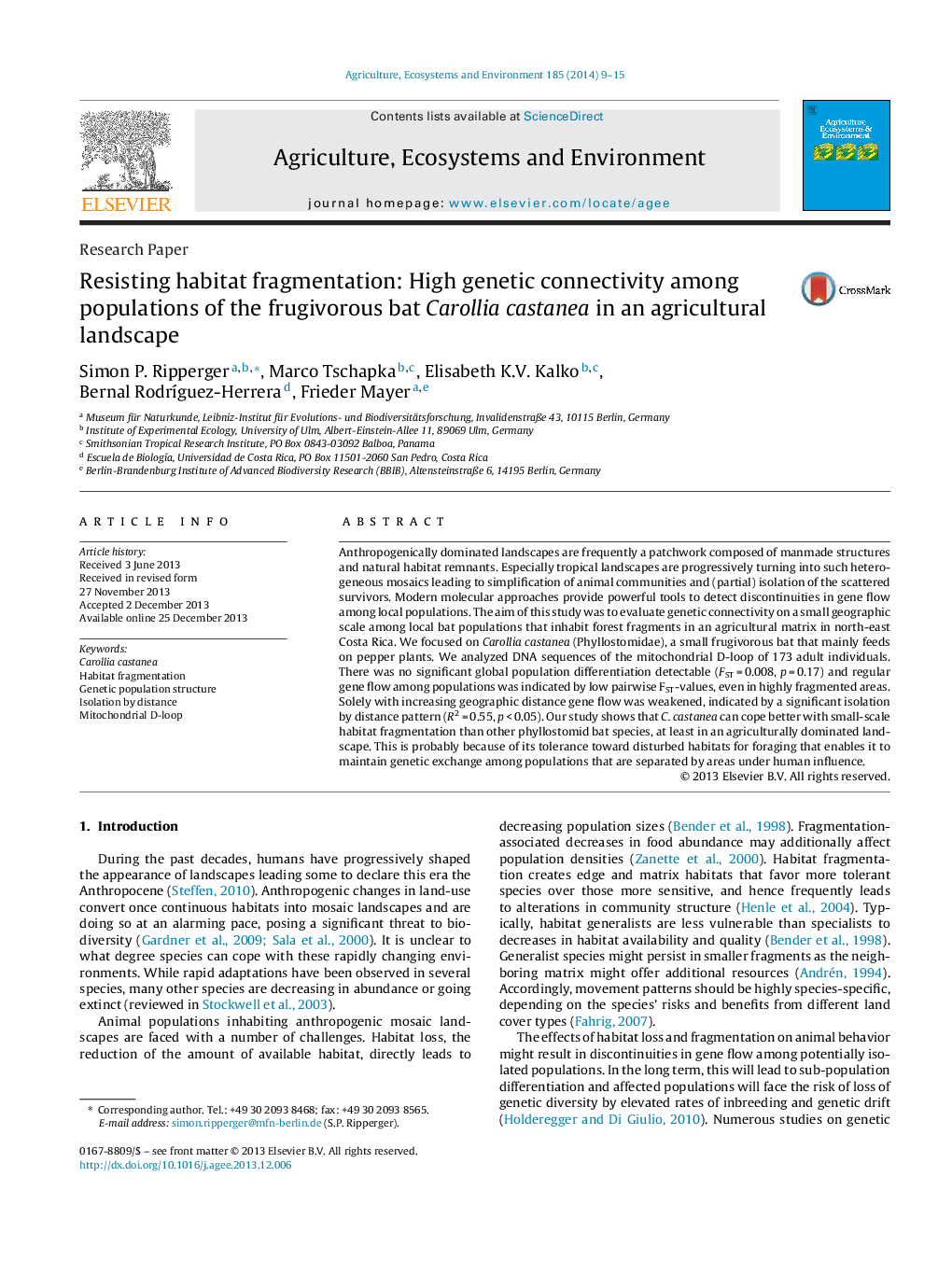| کد مقاله | کد نشریه | سال انتشار | مقاله انگلیسی | نسخه تمام متن |
|---|---|---|---|---|
| 2414062 | 1552067 | 2014 | 7 صفحه PDF | دانلود رایگان |

• We studied small-scale population structure of bats in a mosaic landscape.
• No significant global population differentiation was detectable.
• Low pairwise FST-values among all populations indicate regular gene flow.
• Life history and matrix type influence the effects of habitat fragmentation on bats.
Anthropogenically dominated landscapes are frequently a patchwork composed of manmade structures and natural habitat remnants. Especially tropical landscapes are progressively turning into such heterogeneous mosaics leading to simplification of animal communities and (partial) isolation of the scattered survivors. Modern molecular approaches provide powerful tools to detect discontinuities in gene flow among local populations. The aim of this study was to evaluate genetic connectivity on a small geographic scale among local bat populations that inhabit forest fragments in an agricultural matrix in north-east Costa Rica. We focused on Carollia castanea (Phyllostomidae), a small frugivorous bat that mainly feeds on pepper plants. We analyzed DNA sequences of the mitochondrial D-loop of 173 adult individuals. There was no significant global population differentiation detectable (FST = 0.008, p = 0.17) and regular gene flow among populations was indicated by low pairwise FST-values, even in highly fragmented areas. Solely with increasing geographic distance gene flow was weakened, indicated by a significant isolation by distance pattern (R2 = 0.55, p < 0.05). Our study shows that C. castanea can cope better with small-scale habitat fragmentation than other phyllostomid bat species, at least in an agriculturally dominated landscape. This is probably because of its tolerance toward disturbed habitats for foraging that enables it to maintain genetic exchange among populations that are separated by areas under human influence.
Journal: Agriculture, Ecosystems & Environment - Volume 185, 1 March 2014, Pages 9–15